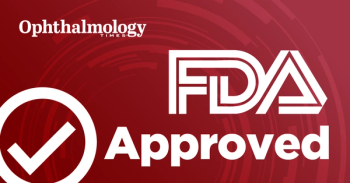
Etiology of postop astigmatism sought after wavefront-guided LASIK
Chicago—Higher amounts of preoperative coma and a greater difference between the preoperative manifest and wavefront-measured cylinder are risk factors for postoperative astigmatism after wavefront-guided LASIK using the Zyoptix platform (Bausch & Lomb), reported Scott M. MacRae, MD. He spoke at the refractive surgery subspecialty day meeting sponsored by the International Society of Refractive Surgery of the American Academy of Ophthalmology.
"We have been working to create an advanced customized nomogram for the Zyoptix system, and in previous studies we identified that preoperative levels of higher-order aberrations (HOAs), including spherical aberration, coma, and trefoil, had a significant effect on postoperative sphere. Based on those findings and using multilinear regression techniques, we have refined our nomogram to optimize spherical correction," said Dr. MacRae, professor of ophthalmology and visual science, University of Rochester, New York, who worked with Manoj Subbaram, PhD.
"Now, we are aiming to determine the etiology of postoperative astigmatism. Once our analyses are complete, we will integrate that information into the advanced nomogram to improve the astigmatism component," he continued.
"Compared with the population of eyes treated in the Zyoptix FDA trial, this group on average would be considered more difficult to treat because they were more myopic, had more cylinder, and more HOAs. Those features reflect our approach to selecting candidates for wavefront-guided treatment based on a previous study that showed patients with more than 0.35 μm of total HOAs tend to benefit the most from wavefront-guided treatment," Dr. MacRae said.
For the treatment plan, sphere was calculated by the Rochester nomogram, which uses the manifest subjective refraction and compensates for the effect of the preoperative HOAs. Per FDA requirements, astigmatism treatment was determined according to the wavefront-measured cylinder.
The refractive and visual acuity results for the group were excellent.
At 1 month, mean sphere was +0.04 ± 0.33 D, mean cylinder was –0.31 ± 0.32 D, and 94% of eyes had 20/20 or better uncorrected visual acuity (UCVA).
Seventy-one (41%) of the 175 eyes developed "significant" postoperative astigmatism that was defined as 0.50 D or higher, he reported.
Newsletter
Don’t miss out—get Ophthalmology Times updates on the latest clinical advancements and expert interviews, straight to your inbox.
















































.png)


